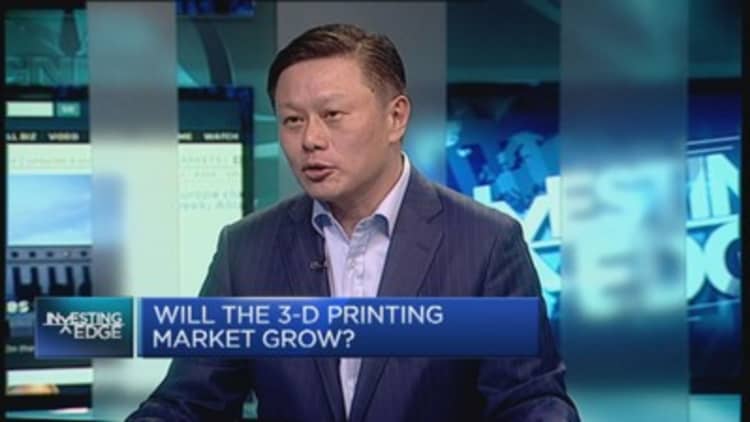Forget 3D printing of cheap plastic figurines and toys, the next frontier for the technology involves printing living human tissue.
Procter & Gamble has become the latest household name to explore 3D bioprinting, which could provide a quicker and cheaper way to test its products for toxicity and efficacy.
The world's largest consumer goods company will on Tuesday launch a grant competition in Singapore, asking academics to submit research proposals on 3D bioprinting applications that would be relevant to P&G.
"We want to look at the possibilities of bioprinting. It's definitely a very strong emerging area," said Professor Elena Lurie-Luke, who heads up P&G's Global Life Sciences Open Innovation business.
Bioprinting works by taking cultured human cells and forming a bio-ink, which is then placed into cartridges that contain a syringe fitted with an extrusion nozzle for printing.

The bioprinter deposits a pattern of cells in layers, interspersed with a water-based gel known as hydrogel that is used as a kind of scaffolding for the cells. The printed tissue is then left to grow naturally, and the hydrogel removed.
P&G is not the only company eyeing up the emerging technology. L'Oréal, the French cosmetics group, said earlier this month it was partnering with US bioprinting start-up Organovo to 3D print human skin.
L'Oréal already has a laboratory in Lyon, France, which focuses on producing in vitro skin tissue. It was set up in 2011 to expand L'Oréal's use of the method as cosmetics companies began moving away from animal testing.
Read MoreHow we're fighting the strong dollar impact: P&G
"We have a number of different in vitro skin models we're working on because we are very involved in beauty care. If companies are doing innovation and interested in new tools then bioprinting should very much be on their horizon," said Ms Lurie-Luke.
Bioprinting is also being looked at by pharmaceuticals companies as a way of speeding up and lowering the cost of drug development and testing. Organovo, the world's first publicly traded 3D bioprinting company, has developed living liver tissue for medical and drug research and clinical trials.
Some experts believe it could also one day be used to produce replacement organs for patients desperately in need of a transplant — but this is unlikely to become a reality in the next 20 years.
While conventional 3D printing of plastics has been around since the 1980s, bioprinting is still in the early stages of development. The technology is currently being used for research, but a few companies — such as Organovo — are attempting to commercialise the production of bioprinted tissues.
More from The Financial Times:
Weak productivity turns into a problem of global proportions
The bond market has forgotten Buffett's first rule
Cameron, Europe and the hand of history
3D printing helps to speed up the tissue-making process and make it more precise. Previously scaffolds were created by hand — or 3D printed — and then the cells were positioned using a handheld pipette.
P&G's new grant is part of a five-year S$60 million scheme with the Singapore government's Agency for Science, Technology and Research. It is open to any of the country's research institutes.
"There's a lot of interest from both consumer goods companies and big pharma in bioprinting. P&G's strategy to launch a grant competition is probably a very cost effective way of trying to get a snapshot of all the possibilities," said Brian Derby, professor of materials science at the University of Manchester.

